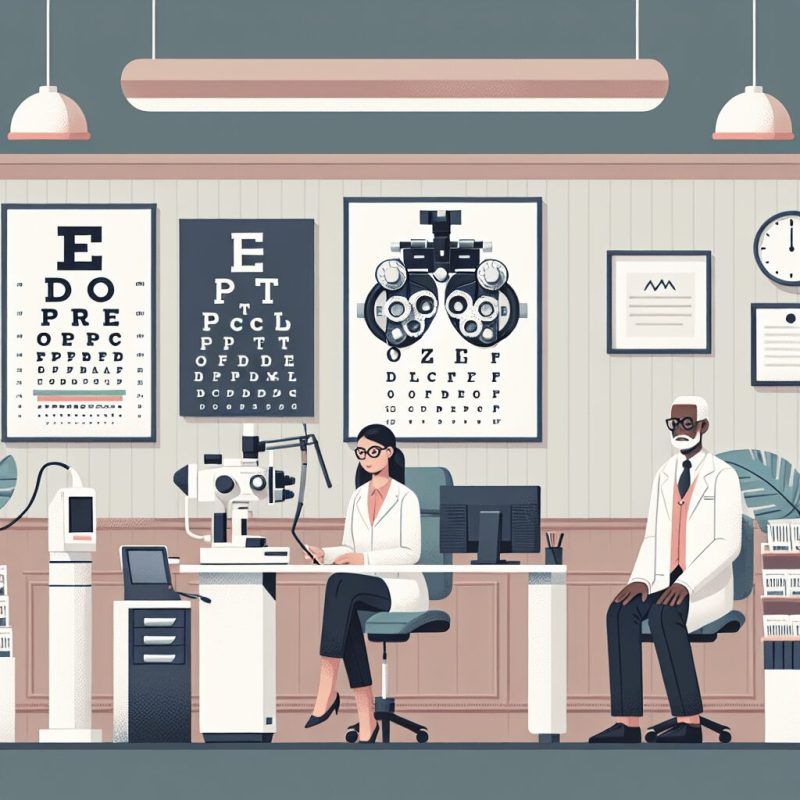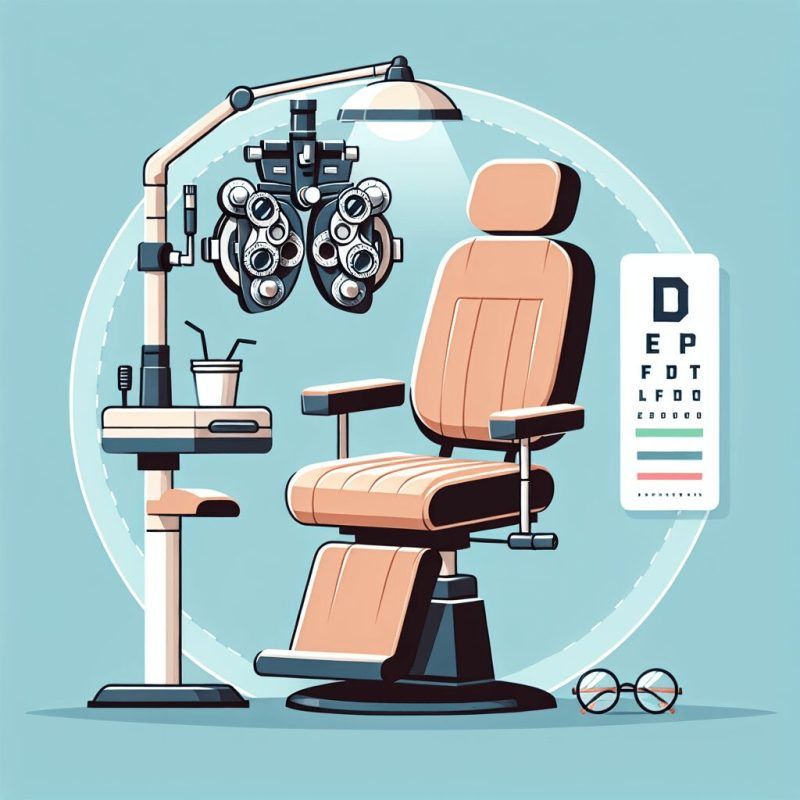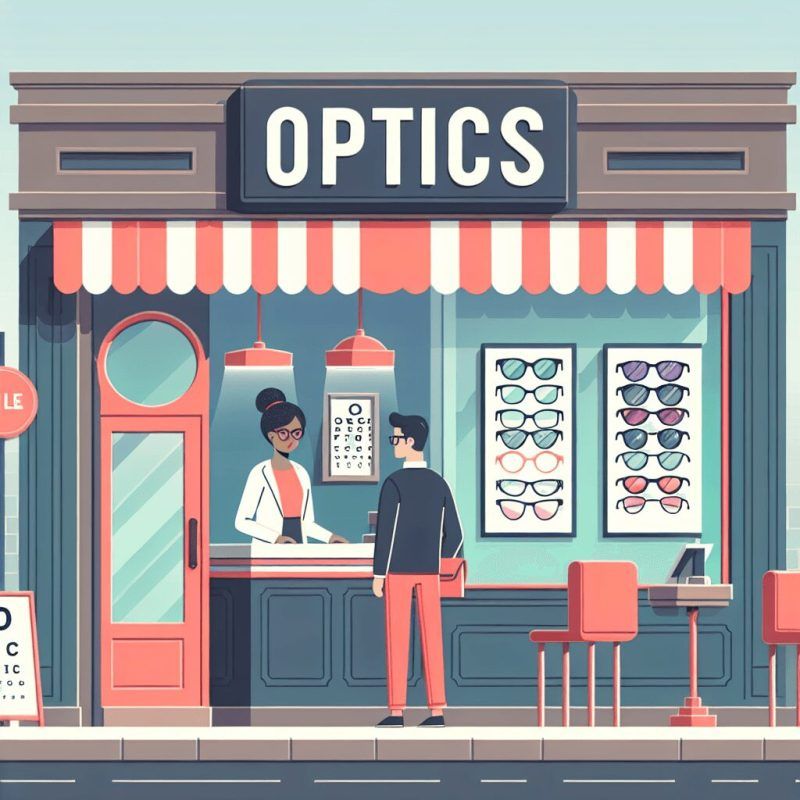1201 Lake Woodlands Dr #1000, Spring, TX | 281-298-5905
7540 Cypress Creek Pkwy, Houston, TX | 281-477-7811
Doctor's Corner
Why You Should Choose a Children Optometrist for Your Kids
When considering your child’s health, eye care holds significance in their overall well-being. Selecting the right eye doctor can make a difference. A children’s optometrist focuses on vision testing and eye health for kids. They ensure the experience is enjoyable and comfortable while also checking for any potential issues. Recognizing the benefits of choosing a children’s optometrist can support proper vision development during these formative years.
Understanding the Role of a Children Optometrist
A children’s optometrist has specialized training to work with young patients, typically completing four years of post-graduate education focused on pediatric eye care. They perform comprehensive eye exams that include tests for visual skills such as visual acuity, eye alignment, and assessment of pupil function. Unlike general optometrists, a children’s optometrist customizes their examination process to make it more comfortable and engaging.
They often use colorful charts and fun activities to assess vision, reduce anxiety, and encourage cooperation.
Additionally, these eye care professionals communicate uniquely with children, employing simple language and relatable examples to explain procedures and results, making it easier for young patients to understand their eye health. This approach not only aids in diagnosing conditions like myopia and hyperopia but also ensures that children feel at ease during the visit.
Importance of Early Eye Care for Children
Early eye care for children supports their overall development and learning. A child’s visual skills, such as visual acuity and eye movement, are important for activities like reading and social interactions. Early diagnosis of conditions like myopia or hyperopia allows a pediatric optometrist to create treatment plans that might involve eyeglasses or eye drops, leading to improved vision and pupil function. This can help reduce academic struggles and enhance social engagement.
Regular eye exams by professionals, including consultations with a general optometrist or a pediatric ophthalmologist, help identify issues early. Parents are instrumental in ensuring their children receive timely screenings and examinations. By being alert to symptoms like poor vision, double vision, or difficulty with eye alignment, parents can encourage visits to eye specialists.
This proactive approach ensures that any medical eye problems, such as strabismus or eye muscle weakness, are addressed promptly, promoting healthier eye conditions and better learning opportunities for their children.
When to Schedule the First Eye Exam
Parents should schedule their child’s first eye exam at six months of age to check the development of their eyes and overall eye health. Following this initial visit, a consultation with a pediatric optometrist should occur annually or by age two or three and again before starting school. If parents notice signs such as poor vision, frequent eye rubbing, difficulty maintaining eye contact, or trouble with tracking objects, it’s important to schedule an appointment sooner.
These signals may indicate underlying issues, such as refractive errors like myopia or hyperopia, which can affect visual skills and learning. During an eye exam, optometrists assess visual acuity, eye movements, and eye alignment, often using specialized tests. If a more serious condition is discovered, an optometrist may refer the child to an ophthalmologist for further evaluation or eye surgery if necessary.
Regular eye care practices help to identify any ocular health problems early, ensuring children can thrivein learning and everyday activities.
Benefits of Seeing an Optometrist Specializing in Children
Expertise in Common Vision Problems
A pediatric optometrist focuses on identifying and managing common vision issues in children, including myopia, hyperopia, strabismus, and double vision. Their skills enable precise diagnosis of conditions that affect eye movement and alignment, ensuring children can see well while reading or participating in activities. Comprehensive knowledge of eye disorders assists in creating tailored treatment plans, which may involve eyeglasses or eye drops.
They perform detailed eye exams that evaluate pupil function, peripheral vision, and overall eye health. To remain informed, pediatric optometrists pursue ongoing education related to eye care, collaborate with other eye professionals like ophthalmologists and orthoptists, and apply the latest research in vision assessments. This continuous education allows them to offer the best support for children facing academic challenges due to visual impairments, positively impacting both their school performance and everyday life.
Regular follow-ups and evaluations enable them to adjust treatments as necessary to promote healthy visual growth.
Tailored Approach to Eye Exams
The tailored approach to eye exams addresses children’s unique visual needs by evaluating their visual skills through engaging tests and careful assessments. An optometrist can customize the exam experience by using kid-friendly language and interactive tools, ensuring young patients feel comfortable. During a consultation, the eye doctor assesses ocular health, looking for conditions like myopia or hyperopia and checking visual acuity, eye movements, and eye alignment.
Specific strategies, such as pupil function tests and peripheral vision evaluations, are adapted for each age group, making it suitable for infants, preschoolers, or older children. The pediatric optometrist may use eye drops gently to assess retina health without causing distress. If any issues like strabismus or poor vision are identified, treatment plans can include eyeglasses, medications, or referrals to a pediatric ophthalmologist or eye surgeon for further care.
This comprehensive eye exam approach supports children’s learning and overall eye care, focusing on individual needs while fostering a positive experience.
Use of Child-Friendly Language
Using friendly language helps young patients understand eye care better during their visits to the optometrist. When eye care professionals explain things in a fun and simple way, kids can grasp their eye health needs more easily.
For example, instead of saying “refractive error,” a pediatric optometrist might describe it as how well they see things far away or up close, like reading a book versus watching TV. To make it fun, optometrists often include interactive tools, like colorful charts and enjoyable vision tests. They may also relate ideas to activities kids know, like saying eye drops are like juice that helps their eyes feel better. When explaining conditions like myopia or hyperopia, using simple phrases, such as “needing glasses to see the board well,” helps children connect their feelings to their care. Through these methods, eye care specialists ensure kids learn about their eye health and vision skills while feeling comfortable and relaxed.
Recognizing Symptoms of Vision Problems
Signs of Myopia in Children
Children exhibiting signs of myopia may show particular behaviors, such as squinting to see objects in the distance or holding reading materials close to their eyes. They may favor sitting at the front of the classroom to clearly see the teacher and the board, suggesting difficulty with their eyesight. Parents can look for indications of poor vision, like a lack of interest in sports that typically require good vision.
Physical signs could include eye strain or discomfort after engaging in activities that require near vision, as their eyes have trouble focusing.
Additionally, children may get headaches from extended visual tasks. Regular eye examinations with an optometrist can help evaluate their vision and detect issues like myopia or hyperopia. An optometrist may prescribe corrective glasses or medications if necessary. If there are concerns, a pediatric optometrist can conduct a thorough eye exam to assess eye health and visual abilities, ensuring that any identified issues, including those related to eye alignment or movement, are promptly addressed with suitable treatment options.
Symptoms of Hyperopia and Other Issues
Common symptoms that suggest a child may have hyperopia include blurry near vision, headaches after reading, and difficulty focusing on books or screens. This can lead to challenges in school as children may struggle with learning due to inadequate visual skills. Holding books at arm’s length or squinting are signs to look for, indicating trouble seeing clearly. Parents should note that these symptoms might overlap with other issues like myopia, where distance vision is affected instead.
A comprehensive eye exam by a pediatric optometrist can help distinguish between these conditions, considering factors like eye alignment and the function of the retina. If parents see behaviors such as eye rubbing, misalignment, or complaints about double vision, they should consult an eye care professional for a thorough evaluation.
The optometrist might suggest treatment plans, which could involve glasses or eye drops, and can provide referrals to an ophthalmologist or orthoptist if medical intervention or surgery is necessary for diagnosed issues. Regular vision testing and attention to their child’s eye health are important for proper care.
Eye Care Professionals and Their Roles
Differences Between Orthoptists and Optometrists
Orthoptists receive specialized training that includes an undergraduate degree followed by two years of fellowship training, concentrating on eye movement and alignment issues. In contrast, pediatric optometrists undergo four years of doctoral training to manage general eye care, including vision tests and prescribing eyeglasses or medications.
While both professionals perform eye exams, orthoptists primarily work alongside ophthalmologists on diagnosed issues such as strabismus, double vision, or eye muscle weakness, creating tailored treatment plans to enhance eye alignment and movements. Pediatric optometrists focus on visual acuity tests and evaluate broader eye health, starting from routine screenings for conditions like myopia and hyperopia and addressing general eye care.
Orthoptists typically see patients with specific eye conditions needing medical attention, whereas optometrists accommodate a broader range of patients, including those requiring routine check-ups for regular exams or vision concerns related to learning.
How to Find a Specialist in Children’s Eye Care
Parents looking for a specialist in children’s eye care should consider qualifications, experience, and the type of eye care professional needed. They can choose between a pediatric optometrist, ophthalmologist, or orthoptist, depending on their child’s specific condition. An optometrist may be suitable for routine vision testing, while an ophthalmologist may be better for diagnosed medical eye issues like strabismus or double vision.
To verify qualifications, parents should check for specialized training in child eye care, which includes knowledge of refractive errors like myopia and hyperopia. Resources such as local health care organizations or pediatric eye care clinics can provide lists of certified eye care professionals.
Reviewing feedback and seeking recommendations can help ensure the eye doctor has a solid reputation for treating children’s vision and eye health, including evaluating eye movements, pupil function, and comprehensive eye exams.
School Vision Requirements and Screenings
Schools require students to have certain vision skills to successfully engage in learning activities, including good visual acuity and sharp peripheral vision, which can be assessed through vision testing. Regular vision screenings are often conducted at schools to identify potential eye problems, and if issues arise, a referral to an optometrist or pediatric ophthalmologist is typically made for a comprehensive eye exam.
Parents are vital in this process by monitoring their child’s eye health and advocating for timely consultations with eye care professionals when concerns are identified. This proactive approach helps ensure that any diagnosed problems, such as myopia or hyperopia, are addressed early, allowing for effective treatment plans that may include eyeglasses or medications. Understanding the significance of pupil function and eye alignment can help parents engage more actively in their child’s eye care and educational success.
If a child is found to have poor vision or an eye condition like strabismus, timely consultation with a general optometrist or specialized eye doctor is necessary for proper management and treatment.
Creating a Positive Experience During Eye Exams
Eye care professionals focus on making eye exams enjoyable and reassuring for children. They often start by using simple language and explaining each test, like how vision testing checks for problems such as myopia or hyperopia. Bright colors and fun charts can capture a child’s attention, making them less anxious. Optometrists and pediatric ophthalmologists might use a friendly tone and engaging activities during the consultation to reduce stress.
For example, they may let children manipulate toys or use entertaining visuals to illustrate eye function or eye alignment. Pupil function tests can be introduced with playful conversation so children understand the purpose of drops without worry. Eye care practices often involve demonstrating how eyeglasses work or explaining what happens during eye surgery for any diagnosed problems, ensuring the child knows they are in good hands.
By promoting open communication, eye specialists can help children feel secure, which is important for accurate vision testing and overall eye health. This supportive environment can enhance children’s visual acuity and comfort while addressing any potential ocular conditions effectively.
Essential Tips for Parents Regarding Eye Care
1. Maintain Regular Eye Exam Schedule
Regular eye exams support a child’s overall vision health by allowing eye care professionals to identify and address issues like myopia and hyperopia early on. These exams evaluate visual acuity, eye alignment, and eye movements, which are important for learning and daily activities. Children should have their first eye exam at six months, followed by a second exam between ages two and three, and then annually from age six onward.
Parents can help their child keep this schedule by tracking appointments, discussing the significance of eye health, and explaining how issues like poor vision can impact learning and recreational activities. A pediatric optometrist or ophthalmologist can offer treatment plans, including eyeglasses and medications like eye drops for specific conditions such as strabismus or double vision. Comprehensive eye exams assist in monitoring ocular health and pupil function, making it simpler to manage any identified problems.
Engaging children in conversations about their visual skills and the importance of testing can encourage them to prioritize their eye care.
FAQ
What are the benefits of taking my child to a specialized children’s optometrist?
Taking your child to a specialized children’s optometrist ensures age-appropriate eye exams, early detection of vision issues, and tailored treatments. For example, they can customize lenses for learning difficulties or provide vision therapy for developmental delays, enhancing your child’s academic and social skills.
How can a children’s optometrist better understand my child’s vision needs?
A children’s optometrist can better understand your child’s vision needs through comprehensive eye exams, observing their behavior during tasks (like reading), and discussing your child’s developmental milestones. Sharing any family history of vision issues and noting specific challenges can also provide valuable insights for tailored assessments.
At what age should my child first see an optometrist?
Children should first see an optometrist at six months for a basic exam. If no issues arise, schedule another visit at age three and then around age five or before starting school. Early detection can prevent vision problems that affect learning and development.
What should I expect during my child’s eye examination with a child optometrist?
During your child’s eye exam, expect a series of tests assessing vision clarity, eye alignment, and overall health. Your child may read letters, use special devices, or play visual games. Bring their favorite toy for comfort, and be prepared to discuss any vision concerns.
Are there specific eye conditions that children’s optometrists are better equipped to handle?
Yes, children’s optometrists are better equipped to handle conditions like amblyopia (lazy eye), strabismus (crossed eyes), and refractive errors (nearsightedness or farsightedness). They utilize specialized tests and tools designed for children, ensuring early diagnosis and effective treatment options. Regular eye exams are crucial for early intervention.
Ensure your child’s eye health with specialized care from a children’s optometrist. At Superior Eye Care in The Woodlands or Quality Eye Care in Willowbrook, Texas, our experts are trained to provide comprehensive, kid-friendly exams that support healthy visual development and address any potential issues early on.
The post Why You Should Choose a Children Optometrist for Your Kids first appeared on Optometrist in Woodlands & Willowbrook TX.
Doctor's Corner
Our Featured Post
Do you have questions about our service?
Useful Links
Information
Mailing List
Stay updated on the latest news & promotions.
We will get back to you as soon as possible.
Please try again later.
All Rights Reserved | Superior Eye Care





